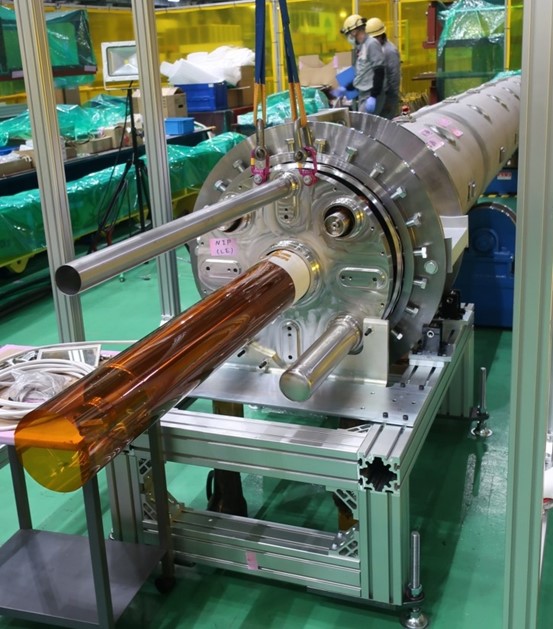The magnet program has reached several milestones since the last annual meeting: in the following we summarize the main achievements of our collaborations. The AUP progress on the MQXFA magnets is covered in a dedicated article (link).
INFN collaboration and the D2 and corrector package cold masses
The production of the 54 high order corrector magnets in SAES-RIAL has been completed in fall of 2021, under the contract steered by INFN-LASA. This is the first completed series production of HL-LHC magnets: two third of the correctors have been successfully tested at 1.9 K in LASA laboratories. The test in LASA will be completed in fall of 2022. A set of nine correctors is being assembled at CERN in the first corrector package cold mass, establishing the manufacturing procedures and the alignment tolerances (see Figure 1). The cold mass will be completed with the prototype nested corrector in fall of 2022.
The D2 prototype magnet has been completed in ASG in fall 2021, under the contract steered by INFN-Genova, and delivered to CERN for integration in the cold mass. This is the longest HL-LHC magnet, with 7.8 m magnetic length and providing a 4.5 T field in the two apertures. During the winter of 2021-2022 the magnet has been integrated with the two D2 prototype correctors (one from China and one from CERN) in the 14-m-long prototype cold mass (see Figure 2). The horizontal test at CERN is foreseen for summer of 2022.
CIEMAT collaboration
During the second half of 2021, a significant result has been obtained for the nested corrector magnet (Spanish in-kind contribution steered by CIEMAT). The test of the design iteration on the inner dipole done to overcome the performance limitations seen in the first two prototypes has been successful, and the third magnet, manufactured at CIEMAT and assembled at CERN, reached nominal current without any retraining (see Figure 3). The manufacturing of the series (6 long correctors and 11 short correctors) started in Elytt in spring 2021, and during the summer-fall 2021 the tooling has been acquired and commissioned. In the winter 2021-2022 the first coils of the short corrector inner dipole have been manufactured, and they have been retrofitted to the second prototype, replacing the inner dipole with the initial design. The retrofitted protype is undergoing test at CERN in the second half of May 2022.
In-kind contribution from China
In China, the manufacturing of the twelve D2 correctors based on the canted cos theta design is ongoing in BAMA, Suzhou, under a contract steered by IHEP. The first two series magnets manufactured by BAMA reached the required performance after a long virgin training at 4.2 K, but the test after thermal cycle showed a short retraining in the region above 90% of nominal current. Two actions have been implemented to reduce the training, i.e., a reduction of the size of the former channels to allow a tighter packing of the conductors, and an improvement of the impregnation procedure. The first coil tested with this new procedure showed a substantial reduction of the training at 4.2 K (see Figure 4). Tests are ongoing to prove the memory after a thermal cycle, that is an essential feature for magnet operation. The quench performance will need to be validated at 1.9 K upon cold mass reception at CERN.
In-kind contribution from Japan
After the vertical test of the D1 prototype in KEK in August 2021, proving the ability of the magnet to operate at nominal current, integration in the cold mass is ongoing in Hitachi; this involves the qualification of critical steps as all the weldings and the magnet alignment features. The magnet delivery at CERN is expected for fall 2022, followed by a final qualification retest in SM18. Winding of the coils of the first series magnet started early this year, and assembly and vertical test of the first series magnet is expected for Fall 2022.

